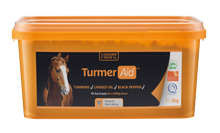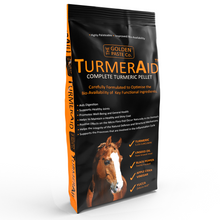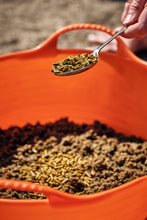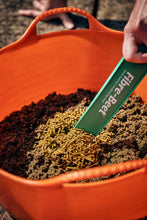Sweet Itch in Horses
What is sweet itch in horses?
Insect Bite Hypersensitivity, otherwise known as Sweet Itch, in the UK ("summer mange", "summer eczema" or "Queensland itch", across the world), is a chronic, recurrent, seasonal dermatitis of horses.
What causes sweet itch in horses?
Sweet itch in horses is caused by the bites of female biting midges – species of the genera Culicoides – and is prevalent across spring and summer, dying back in autumn and absent in winter.
Sweet itch is caused by an allergic reaction to the protein in the saliva of biting insects. This causes the immune system to attack its own cells and leads to the extreme reaction.

When does sweet itch start?
As it presents typically in a horse's second or third summer and subsequently worsens with age, it appears to be a delayed hypersensitivity as well as a threshold response.
What does sweet itch in horses look like?
Horses predominantly show signs of sweet itch at the base of the mane and tail, and on the face. The withers, back, belly and rump can also be affected.
Clinical signs range from mild to severe itchiness, often accompanied by hair loss and broken skin from constant scratching which can then lead to an infection.
Over time the skin can thicken, folds develop and the hair becomes sparse and coarse with flaky skin.
Several behavioural changes can also occur including excessive rolling and mutual grooming, head shaking, face rubbing and an agitated/restless demeanour.

Is sweet itch in horses hereditary?
Some breeds have been found to be at an increased risk and it can be genetic as they are at an increased risk of developing the condition.
Sweet itch treatment in horses
There are several ways we can help horses with sweet itch by reducing their contact with midges. Bring horses in at dawn and dusk and if possible fit small mesh over the stable doors and windows to stop insects getting in. Avoid fields with or near water and hedges or trees as these are areas where midges gather, an exposed field is best as midges can’t fly if the wind speed is over 5mph. Make sure you keep on top of poo picking and avoid humid conditions as much as possible. For horses that are severely affected, a ceiling fan in the stable may be required in case any midges do get in.
Using a sweet itch rug can also protect the horse and some people find an insect repellent helps. There are topical products on the market and if very severe your vet may prescribe steroid medication.
Using TurmerItch as part of sweet itch management is a new approach which proved to be very effective in trials. By introducing this dietary system that can help optimise digestive health, the microbiome and gut integrity, the allergenic contribution to the itch threshold is reduced; subsequent challenges from biting insects may then fall below the threshold, thus reducing scratching and damage to the coat and skin.
By “priming” the body to be less responsive to allergens generally, subsequent seasonal rises in midge bites should be less of a problem; the skin of the horse will have a barrier of bioactives that have been shown to act as a repellent, neem for example, and be less responsive to bites.

TurmerItch combines key specialist ingredients including Neem, Red Bush Tea, Apple Cider Vinegar and Chamomile, to help provide relief from itching and soothe the skin by promoting a healthy skin and coat. It also contains Turmeric and Cooked Linseed to help produce a high shine to the horse’s coat.
We saw incredible results during the trial, check out our reviews and testimonials! The active ingredients in TurmerItch™ support biting insect repulsion and help maintain reduced sensitivity which was demonstrated during trials with the supplement over a 12-month period. Not only was the supplement extremely beneficial to horses suffering with biting insects as it reduced itching, it also improved hair regrowth and coat shine.
If your horse or pony suffers from Sweet Itch, we would highly recommend trialling a tub of TurmerItch. Before purchasing, you can read some testimonials about using TurmerItch for sweet itch in horses below and if you have any other questions, please do not hesitate to contact the GPCo nutrition team.
“I am amazed at how well it is working after only starting it the beginning of January. My horse suffers with itchy skin as well as sweet itch. The past two summers have been an absolute nightmare but by the look of the condition of her coat and skin now I’m very hopeful for a much more relaxed summer!” – Katie

“The reason I feed TurmerItch is that April, my TB X Connemara, suffers with sweet itch. Normally we are able to control it well but this year it has just been awful. It didn’t matter what we did to try and help nothing was working. So when I saw TurmerItch in a local feed shop I thought I have nothing to lose. I did question the cost but it outweighed the cost of new rugs, endless fly sprays and shampoos.
“I feed 2 tbsp a day, one in the morning and one at night. It’s so easy she eats it out of my hand or out of her tub with no need to add feed to hide the TurmerItch. Since starting April on TurmerItch the difference is remarkable!
“Before using TurmerItch April would go out to the field and roll for a good five minutes trying everything to get her sweet itch rug off, she would rub and scratch on anything she could. Even when brushing her you could see how itchy she was. Now she goes out to the field has a quick roll, doesn’t rub or scratch and when grooming she is so much happier.
“I would recommend TurmerItch happily to anyone. I am just so happy to have found a product that does what it says, and will continue to feed all year round.” – Lynn









